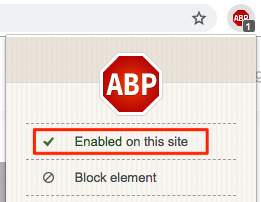TransplantVideo Gallery
Chicago 2009 Video – Robotic Hand Assisted Left Donor Nephrectomy
V. Gorodner
Background
The living related donor nephrectomy has become a very popular procedure since the introduction of minimally invasive surgery. This has increased considerably the pool of donors. Most of the time due to its favorable conditions a left donor nephrectomy is the procedure of choice.
Methods
33 year old male donating a kidney to his brother who suffer from end-stage renal disease. The donor was screened according to a standardized protocol. Abdominal CT scan showed single renal arteries bilaterally without early branching.
EndocrineVideo Gallery
Chicago 2009 Video – Robotic Transaxillary Completition thyroidectomy for sospicius thyroid cancer with parathyroid reimplantation
G. Caravaglios
Robot assisted thyroidectomy has been recently becoming more popular and successfully used in United States and Korea. Technical limitations and precise indications still have to be defined. The presence of scar and adhesions due to previous lobectomy could increase the difficulty of the procedure.
Hepato-biliary and pancreaticVideo Gallery
Chicago 2009 Video – Robot Assisted Spleen Preserving Distal Pancreatectomy: A medial to Lateral Approach
E. F. Elli
Background/Hypothesis
Minimally invasive spleen-preserving distal pancreatectomy (SPDP) represents a safe and reliable surgical option for benign or borderline tumors of the body and tail of the pancreas. Two techniques are currently adopted for the preservation of the spleen
OncologyVideo Gallery
Chicago 2009 Video – Robot Assisted Gastrectomy D2 Dissection for Adenocarcinoma: Initial Experience with 20 Patient
M. Gualtierotti
Background
The aims of this study were to assess the feasibility of robot–assisted gastrectomy for adenocarcinoma with D2 lymph nodal dissection and to analyze our preliminary results.
Patients and methods
Between January 2006 and June 2009 as many as 20 patients (12 females
OncologyVideo Gallery
Chicago 2009 Video – Robotically-Assisted Splenectomy for Rare Splenic Pseudocyst with Increased Ca 19-9 Values
K. Konstantinidis
Background/Hypothesis
Up to now there are only 30 reported cases of splenic pseudocysts elevating Ca19-9. Laparoscopic treatment of splenic cysts is extensively described. Robotic surgery offers a modern alternative that enhances visual field and dexterity of surgical maneuvers in the narrow field around large splenic tumors. We present the case of a 32-year old female patient
Hepato-biliary and pancreaticVideo Gallery
Chicago 2009 Video – Robotic Pancraticoduodenectomy: Experience with 70 Cases
P. Addeo
SUMMARY
This presentation describes a single surgeon ( Prof; PC Giulianotti) experience on robotic pancreaticoduodenectomy over a period of 9 years at two different centers. The intraoperative outcomes of 70 consecutive robotic Whipple’s operation are analyzed and the main technical points of this complex minimally invasive operation underlined.
Background/Hypothesis
Minimally invasive pancreaticoduodenectomy (PD) is a technically demanding procedure performed only in few centers worldwide. Laparoscopy has not gained popularity for this operation due to the technical intrinsic limitations of this approach.







